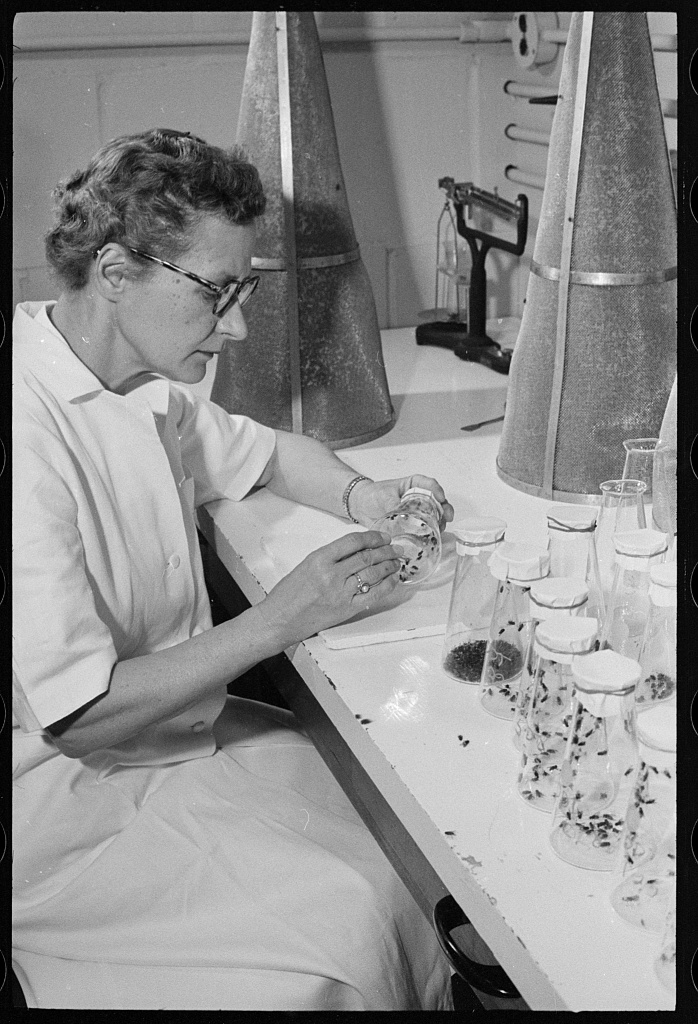Abstract: This program originates from the ballroom of the Lord Baltimore Hotel where alumni are celebrating the 77th anniversary of the Johns Hopkins University Lynn Poole opens the program by paying special tribute to Elmer V McCollum who discovered vitamins A and B and John Lee Pratt who donated money to establish the McCollum Pratt Institute of the University Using a periodic table Dr McElroy points out the macronutrients nitrogen phosphorous potassium magnesium sulfur calcium and sodium and the micronutrients or trace elements copper manganese iron and zinc In addition to these animals need cobalt and iodine to thrive and plants need boron and molybdenum Both a diagram and an animation show how a nutrient deficiency in the soil may not affect plant health but wont be passed on to humans or animals and therefore could adversely affect them eg lack of iodine in the soil may result in goiter in a human
Date Published: 1953-02-23
Abstract: Two seemingly unrelated crimes are linked and subsequently solved through forensic techniques involving spectrometry blood typing and ballistics with the use of microscopic methods
Date Published: 1951-10-29
Abstract: Using diagrams Dr Lowell J Reed first describes the history of epidemics the origins of disease using measles and small pox as examples and means of transmission He then demonstrates the epidemic theory where St is the number of people susceptible to the disease over time multiplied by 1 minus qct the probability of a person with the disease meeting a susceptible person equals C t+1cases over time Also factored into this equation is the number of people who develop an immunity to the disease after recovering from it The theory is then tested against experience Dr Reed sets up an experiment demonstrating the practical application of the theory using a model He then discusses epidemic control focusing on isolation of people who already have the disease and immunization of people who are susceptible to the disease
Date Published: 1951-04-17
Abstract: This program defines biological warfare its basis being what has happened experimentally with animals and accidentally with people such as the Q fever epidemic Dr Langmuir from the Communicable Disease Center in Atlanta describes how an attack might contaminate air with infectious material or water supplies with contaminants spread throughout the distribution center He also enumerates the agencies and organizations included in the public health safety net Norman Kiefer of the Federal Civil Defense Administration suggests that we need better sampling and lab methods vaccines and investigation procedures to combat communicable diseases The viewers were urged not to spread rumors but rather to request the pamphlet What You Should Know About Biological Warfare
Date Published: 1951-04-03
Abstract: The workings of an atomic bomb are explained through atomic reactions and fusion Comparisons are made to TNT and hydrogen explosions and some peaceful applications for nuclear energy are discussed
Date Published: 1951-11-26
Abstract: Preservation cleaning and restoration of art objects are presented as scientific processes Careful use of solvents and tools can restore paintings and sculptures to their original brilliance Using ultraviolet light and xrays original paintings can be discovered beneath layers of paint
Date Published: 1951-02-27
Abstract: Archaeologists dig through layers of historic sites to discover artifacts of ancient civilizations Several minutes lack video
Date Published: 1951-03-13
Abstract: Comparisons between normal and cancerous cells show chemical differences between them This will lead to the development of viruses and other organisms that will be able to kill cancer cells without harming normal cells
Date Published: 1951-04-10
Abstract: Industrial plants and factories discharge waste into streams that lead to pollution of the streams and rivers Scientists are working with industries to process industrial wastes so as to reduce water pollution
Date Published: 1951-05-01
Abstract: Fossils of prehistoric organisms show the characteristics of ice age life and the earths geologic past
Date Published: 1951-03-06
Abstract: Chemical analysis of the key elements of plant and animal life chlorophyll and hemoglobin is presented
Date Published: 1951-07-10
Abstract: Tests are performed to judge the capability to operate an automobile Vision depth perception reaction time and knowledge of safety factors road conditions and traffic laws affect the capability to drive
Date Published: 1951-07-31
Abstract: The most efficient time for planting crops can be determined by scientific methods A study of climatic factors leads to the development of a growth index for setting a time table for planting anad harvesting for producing crops with the best quality
Date Published: 1951-07-17
Abstract: Feeding children from infancy through early childhood is discussed Forced feeding at set times is no longer recommended Instead an infant should be fed when it is hungry At 12 months solid food can be introduced beginning with bland cereals followed by fruit vegetables and then meat Food should be supplemented with vitamins C and D in the infant diet with orange juice and cod liver oil or in concentrated forms For older children a balanced diet is recommended along with behavioral methods of dealing with meal times
Date Published: 1951-11-05
Abstract: In 1939 the presence of the Rh factor was discovered to be in the blood of a large majority of human beings This explains the some of the problems in pregnancy and childbirth when a father is Rh positive and the mother is Rh negative which can cause hemolytic disease of newborns
Date Published: 1951-07-24
















